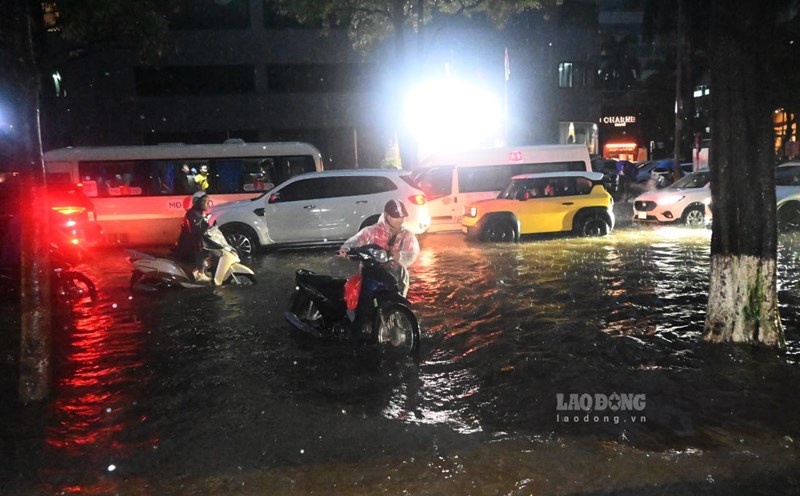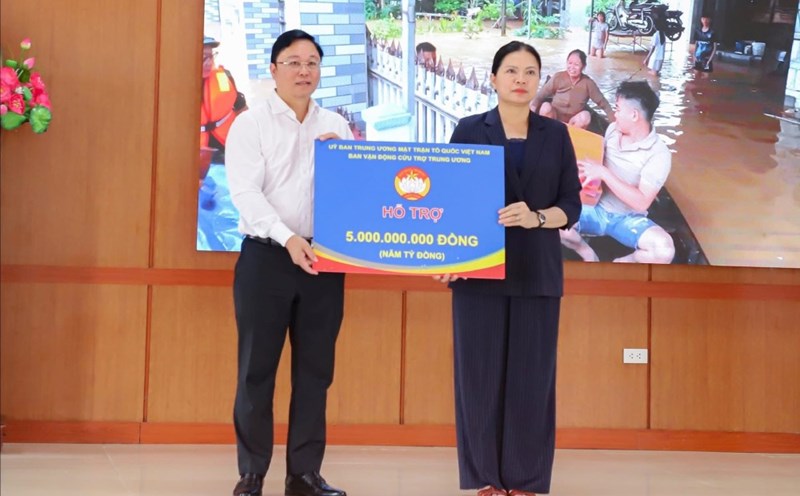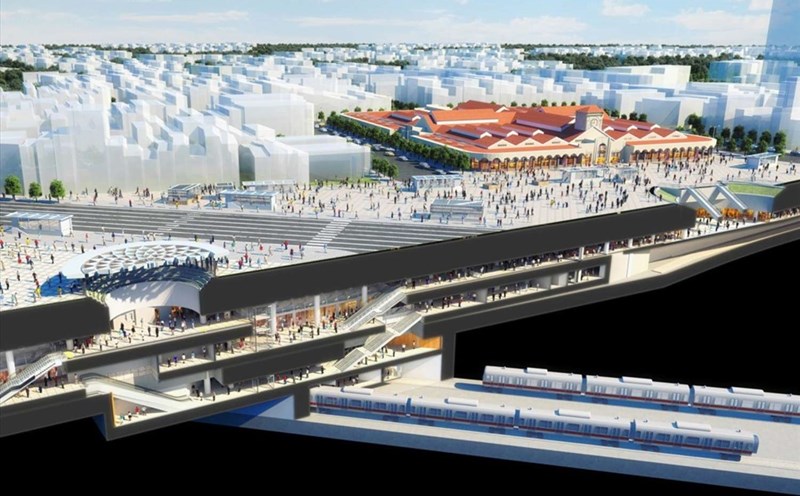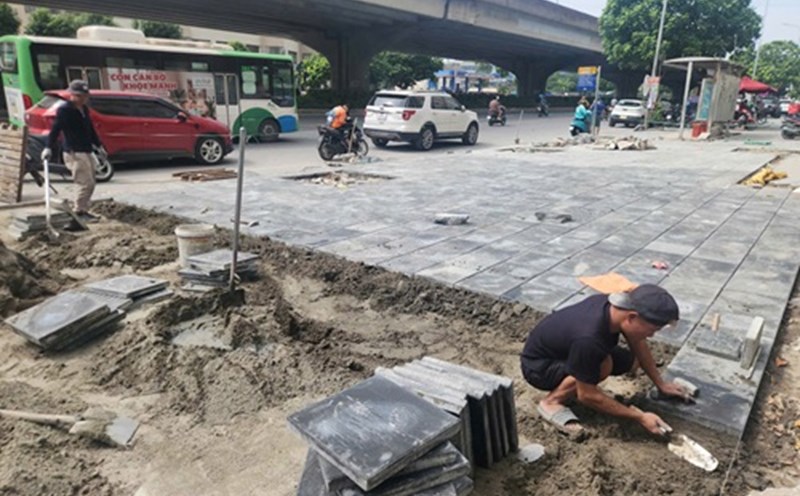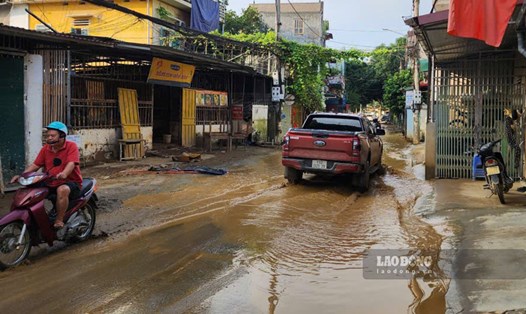National Assembly delegate Hoang Huu Chien - National Assembly delegation of An Giang province has just sent a question-and-answer session to the Ministry of Construction. This includes the following content:
In recent times, the Ministry of Construction has played a leading role in planning and state management of urban construction, transportation and related infrastructure. However, flooding in urban areas still occurs and is complicated.
For example, flooding in Hanoi after the recent storm No. 11. Request the Ministry of Construction to clarify the causes.
After studying, the Ministry of Construction would like to answer as follows:
The main cause of widespread urban flooding when there is rain, big storms combined with upstream floods in urban areas as reported by mass media recently:
Impact of natural conditions and climate change, rising sea levels: Urban areas are often located in plains close to the sea, rivers and ditches with small natural slopes and poor drainage.
Extreme weather phenomena are increasing, heavy, prolonged rain, and sudden rain are happening more and more, exceeding the design frequency of urban drainage systems as well as combining rising sea levels (high tides) and floods from upstream causing flooding.
For example, for Hanoi city: The drainage network of Hanoi City has not been invested synchronously and is being invested, renovated, and upgraded with the rainfall calculated according to the 2013 plan of 310mm/02 days.
Due to the influence of storms No. 10 and 11 in 2025, the city will have heavy rain with high intensity, the rainfall measured in many areas of the city is over 250mm, some places up to 500mm in less than 1 day, overloading the drainage capacity of the drainage system, causing local flooding and widespread flooding.
Developing a drainage network that cannot keep up with the urbanization rate in provinces and cities across the country:
By December 2024, the whole country will have 900 urban areas, including more than 200 urban areas of type IV or higher compared to 86 urban areas in 1998 and the urban population rate in 2024 of Vietnam is about 44.3%. In contrast to the urbanization rate, urban drainage systems in provinces and cities, urban drainage systems in localities across the country have been built for a long time (at least over 50 years - since the French colonial period).
The urban drainage system is interspersed between the old drainage culvert and the new drainage culvert, but is still a common drainage system that was formed a long time ago (rainwater and wastewater drainage in the same system), so the drainage capacity is not uniform. The rate of drainage pipes per capita in urban areas of some new urban areas is about 0.7 m/person, about 1/3 of the world average (2 m/person).
Therefore, the lack of investment in upgrading, renovating, and developing the drainage network makes urban drainage capacity limited, so it cannot meet the demand for increased rainfall due to climate change, leading to flooding. In addition, the urbanization process has caused the area of rice fields, vacant land, ponds, lakes, canals for natural water storage to be concreted, which has led to a significant and rapid decrease in the area of natural surface absorption, which is also a cause of urban flooding.
Regarding planning work: Currently, 06 centrally-run cities have been granted specialized drainage planning and land elevation management planning.
However, drainage planning and elevation management projects have been established for a long time and have not been adjusted to suit the urbanization rate, population development rate of cities and especially have not fully calculated the factors of climate change and rising sea levels.
The remaining provinces (28 provinces) integrated drainage plans into the provincial planning, so drainage plans are only general orientation, lacking a lot of information and data, especially information related to climate change and rising sea levels. Drainage solutions of provinces are often studied at the scale of zoning plans (the scale of plans is 1/2000), detailed plans (the scale of plans is 1/500) with a smaller scope than provincial plans, general plans, so the overall connectivity and synchronization of projects are not high.
Lack of resources to invest in the construction of urban drainage works: Collecting synthesis from local reports, in reality, the drainage sector and wastewater treatment plants have not received attention. The state budget from the central and local governments for drainage is very small, not enough to cover development investment needs, it is estimated that it will only meet 60% of investment needs.
The state budget for investment in the development of drainage systems is very low while the Vietnamese population is increasing along with the rapid urbanization process, the ratio of drainage culverts per capita is low.
The state budget allocated to the drainage and wastewater treatment sector accounts for a small proportion compared to the budget allocated to energy, transportation, telecommunications, etc. While there is a lack of specific mechanisms, policies, and technical guidance to encourage investment from other resources outside the public sector or under the PPP form.
In fact, according to the Ministry of Finance, there have been 336 PPP projects signed contracts (mainly BOT and BT) but the majority are projects on transportation, technical infrastructure (resettlement, dormitories), office construction, administrative center and energy. And recently, no PPP project on drainage and wastewater treatment has been implemented.
The Ministry of Construction also believes that the awareness of protecting the community's drainage system is not high, the behavior of discharging waste into regulating lakes, drainage ditches, and filling water intake gas stations among people is still quite common, which is also a contributing factor to reducing the system's drainage capacity, leading to flooding.


